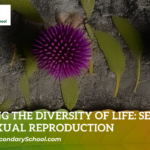Meiosis
In the intricate ballet of life, meiosis takes center stage as a mesmerizing genetic performance, essential for the creation of diverse and unique offspring. This intricate dance of cell division, distinct from mitosis, plays a pivotal role in sexual reproduction, contributing to the genetic variation that fuels evolution. This article delves into the enchanting world of meiosis, exploring its stages, significance, and its role in shaping the tapestry of life.
Defining Meiosis: The Symphony of Genetic Diversity
Meiosis is a specialized form of cell division that occurs exclusively in reproductive cells, or gametes, and results in the production of four genetically diverse daughter cells. Unlike mitosis, which produces genetically identical cells, meiosis is a genetic pas de deux, shuffling and recombining genetic material to create unique combinations.
Stages of Meiosis: Unveiling the Dance
Meiosis comprises two sequential divisions: meiosis I and meiosis II. Each division consists of phases similar to those in mitosis, including prophase, metaphase, anaphase, and telophase.
Meiosis I:
Prophase I: Homologous chromosomes pair up in a process called synapsis. Crossing-over occurs, where sections of chromatids are exchanged between homologous chromosomes, increasing genetic diversity.
Metaphase I: Homologous chromosome pairs align at the cell’s equator, the metaphase plate.
Anaphase I: Homologous chromosomes are pulled apart and move to opposite poles.
Telophase I and Cytokinesis: Two haploid daughter cells are formed, each with half the original chromosome number.
Nuclear envelopes may reform, and the cell may enter a brief interphase-like state known as interkinesis.
Meiosis II:
Prophase II: Chromosomes condense again, and a new spindle apparatus forms.
Metaphase II: Chromosomes align along the metaphase plate in both daughter cells.
Anaphase II: Sister chromatids are separated and move to opposite poles.
Telophase II and Cytokinesis: Four haploid daughter cells are produced, each with a unique combination of genetic material. These are the gametes.
Genetic Variation and Evolutionary Potential
Meiosis is a driving force of genetic diversity. The combination of crossing-over in prophase I and the random assortment of homologous chromosomes in metaphase I generates an almost infinite variety of genetic combinations. This diversity is the raw material for natural selection, driving adaptation and evolution.
Meiosis and Human Reproduction
In humans, meiosis occurs in the gonads (testes in males and ovaries in females) to produce gametes. The fusion of a sperm cell and an egg cell during fertilization restores the diploid number of chromosomes in the zygote, which develops into a new individual.
Errors and Consequences
Errors in meiosis can lead to chromosomal abnormalities, such as trisomy (an extra chromosome) or monosomy (a missing chromosome), which result in conditions like Down syndrome and Turner syndrome.
Meiosis’s Profound Impact
Meiosis is more than just a cellular process; it’s a genetic masterpiece that shapes the diversity of life. It’s the reason siblings can look similar yet be distinct, and it’s the source of the hereditary traits that define generations. As we uncover the secrets of meiosis, we gain deeper insights into the dynamic dance that fuels evolution, showcases diversity, and sustains the wondrous continuum of life.




